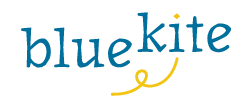Let’s be honest. There are some really bad websites out there.
And, it doesn’t take design from 1997 for your website to reek with mediocrity. All it takes is just a few simple mistakes for your website to blend in with billions of others or stand out for all of the wrong reasons.
If you want people to take your website and your business seriously, then there are a few critical mistakes you must avoid with your website.
Mistake #1: Cliché Terminology
Many websites look okay on the surface until you start reading the copy. That’s where things really start to go downhill.
It doesn’t take long to find websites full of jargon and business cliches. This bland language is unoriginal and will do a poor job of helping your business stand out.
Not sure what I mean?
Here are a few offenders that I’ve seen recently:
- Full-service (i.e. “We’re a full-service _____”)
- Synergy
- Results-oriented
- Comprehensive solutions
- Business objectives
Thanks to a great conversation over at Google+, here are a few more that folks threw out:
- Turnkey
- Cutting edge
- Groundbreaking
- Unique
- At the end of the day
- Thinking outside the box (or blowing up the box entirely!)
There are a ton more out there. If you’re not sure exactly what qualifies as a cliché, check out this great list.
We tend to lean on clichés
because they’re easy. But, easy doesn’t make them great vehicles for explaining the work you do.
So, how do you get rid of them?
Take a look at your website. In fact, print off each page of your site and highlight all the jargon and industry-speak.
Then find better, simpler ways to explain each item an replace it on the site. Use metaphors, analogies, descriptions or flat-out plain language. Sometimes, the best way to get the point across is to say it simply.
Mistake #2: Overused Stock Photography
Stock photography is a great and affordable way to add imagery to your website. Unfortunately, it’s easy to resort to tired and boring images that are rampant throughout the web.
Take law firm websites for example, how many times do you see gavels, scales of justice or people in suits shaking hands? A lot.
Because everyone uses those images, it’s hard to make your law firm stand out if you use them too. Instead, include photos of the attorneys in your firm or feature photography that showcases the type of law you practice.
Think creatively to find images that convey who you are and what your business is about. Doing that will help you take your site to the next level.
Also, if you find a stock photo that you love, try Google’s reverse image search to
see if how often the image is used, especially within your industry. This will help you avoid selecting overly common images.
For instance, here’s the search for the image used on my home page. You’ll notice that there are only a few other sites that use that image and none of them are marketing companies.
Mistake #3: Poor navigation
There is nothing worse than a site that is difficult to navigate. Navigating your site shouldn’t turn into a guessing game of “what’s behind door number one?”.
If people have to hunt to find your content, they’ll just leave.
When it comes to your navigation, don’t get too cute with it.
I’m not saying you shouldn’t be creative, but companies should steer clear of navigation that doesn’t clearly convey where to find information on the site.
Take Blue Bell’s website, for example. When you go to the site, it’s not abundantly clear where to find anything. You have to roll your mouse all over the page to find the navigation. This doesn’t create the best user experience.
So, what constitutes good navigation?
- Clear labels. Navigation should be easy to find and labeled appropriately. It should be obvious where the user to click to get to the desired page.
- Easy to understand. In other words, “about us” takes to you to a page about the company. Simple works.
- Consistent. The navigation menu should be the same on every page. Moving it around only confuses the user.
- Link the logo. Most users expect to get to the home page by clicking on your company logo. Following that practice to make it easy on your users.
If you need some inspiration, here are some great examples of websites that have beautiful, but easy-to-use navigation.
You can do this
Eliminating these issues on your website will do wonders for your business. You just have to know what to look for and take the time to look through your site with a critical eye.
Have you made any of these mistakes on your website? What areas do you need to work on?
Photo credit: Jon Matthies



12 replies on “Three Critical Mistakes to Avoid on Your Website”
Too true and too funny, Laura! I love the cliches and as I read them was thinking, “oh, please don’t let one of them be on my site!”
Thankfully, they weren’t. Do people really put “blow up the box” on their websites? Wow. I think case studies are a great way to showcase your portfolio, rather than just throwing up a bunch of images/samples that you can’t maintain or that can look dated.
I have that particular problem right now and am in the process of changing it to more accurately reflect the outputs that I can produce based on the situations that my customers face.
I’ve never seen “blow up the box”, but
@tylerlclark:twitter
mentioned he’s seen things like that. Sadly, I wouldn’t be altogether surprised!
And yes, case studies are definitely a great differentiator! Good suggestion.
Regarding the “blow up the box” thing: As “thinking outside the box” has become a painfully tired cliche, I continue to hear people say/write exaggerated versions of it. It’s terrible. They continue with the “box” metaphor but just take it somewhere else. “Blow up the box.” “There is no box.” “Building a new box.” Ugh.
If you’re using any variation of the old “box” metaphor to show out unconventional and innovative you are, you aren’t actually being unconventional and innovative.
I’m now officially on the lookout for the next “box” reference out there. I’m sure I’ve seen it, but I now want to find it and bookmark it as proof!
And yes, totally agree – it’s a very unimaginative statement.
Thanks for the reverse Google search tip, Laura. For me, the navigation point is the one that seriously irritates. I know “Home” or “Services”
is boring and just so internet 1.0, but
those labels work.
You’re right – sometimes, the simplest choice is best. 🙂
Good list Laura! I’m probably guilty of the stock photography problem, particularly on individual posts. I think I need to take a better look at the photos on the main content pages as I redevelop the site.
Thanks for making me think!
I think blog posts are slightly different that photography you use elsewhere on the site. You could easily spend a lot of time and money trying to find unique images for each individual blog post. I think it’s more important to do that for key images on your home page and other static areas of the site.
No one-stop-shop?
Ooooh! Good one. Can’t believe I missed that!
I try not be be turnkey, cutting edge, or groundbreaking, and I never think
out of the box 🙂 I might be guilty of something close to this on my main design site actually … I do often repeat that we are a full-service firm and I’m about due for new copy.
I love using stock shots on my blog, but always try to steer clients away from simple stock solutions on their sites. Sometimes they win that battle, but I try to pick the least-canned shots for their site or brochure. It’s funny in initial meetings they often point to sites they like and the most common stock shots usually appear with these sites. Thanks for the tip on Google’s reverse image search, didn’t know about that.
Thanks, Laura
It’s hard not to slip into cliche writing. In fact, I’m pretty sure I’m guilty of it every now and then. It was just really striking how EVERYONE seems to use these terms. People would do well to find a more creative approach.
I love stock photos and use them a lot. But you’re right – you need to stay away from the stereotypes. Just because it’s the first image that comes to mind or something that you see other places, does NOT mean you should use it too. It’s a tough battle to win sometimes though.